Jeff Goins's Blog, page 78
August 12, 2013
The Benefit of Stopping to Smell the Roses [Slow Down Challenge: Day 1]
When we live such frantic lives, we can end up moving from one thing to the next without really concentrating on anything in particular. We can hit the fast-forward button on life and not stop until the end. Which isn’t much of a life at all.

Photo Credit: Jonathan Kos-Read via Compfight cc
Life is not a race. It’s a walk around the block, a casual stroll through the park, a deep abiding in where you are right now. Anything else is a facsimile, a farce, some cruel distraction from what’s most important.
It took the birth of my son to help me to stop and smell the roses, as they say. The introduction of a new life into our family made me realize how much I was missing.
When Aiden was first born, sometimes I would go on a short trip for work and when I would return, my son was a different boy. I had missed a lot.
As a new parent, I began to understand that cliche everyone tells you is actually true: it all goes so fast. But I don’t want this experience of raising a child to race by; I want it to drag on, deliberately and definitively.
I want to enjoy being a dad. Because I’m not waiting for this to be done; I’m not biding my time until the “good stuff” comes. This is it: the very best stuff life has to offer.
The reality is, this is true for all of us, wherever we are. Right now is the only time you will ever have. So it has to be the best — because it’s all you get. Better make the most of it.
Challenge: Notice
Take your time today noticing what you tend to miss. Find a way to interrupt your busy schedule and enjoy what’s right in front of you.
Whenever you can find the time, spend at least 15 minutes going for a walk — around the block, around the yard, or even around the office. As you do so, try the following:
Look around (if you’re the praying type, ask for eyes to see).
Take note of whatever catches your eye; concentrate on it.
When you get back, write down what you saw.
As you go through your day, revisit your list. Remember what you noticed and say a quick thank-you for each item.
This is a simple but powerful exercise to help you not only slow down but appreciate the things we so often miss or ignore. For example:
the way sunlight refracts through a glass of water on the kitchen counter
the squishy sound dew on grass makes when you trudge through it
the cute face your kid makes just before he smacks you right in the face (I’m speaking from personal experience)
These are not distractions from life; they are life itself. Let’s not forget or rush through them on our way to the next big accomplishment. Because in the end, these moments are all we have.
For more on this concept of taking your time and enjoying every moment, check out my new book, The In-Between, which is a call to embrace the slower moments of life (it’s currently 40% off on Amazon).
What do you see when you stop to smell the roses? Feel free to share what you saw on your walk in the comments.
You just finished reading The Benefit of Stopping to Smell the Roses [Slow Down Challenge: Day 1]! Consider leaving a comment!
Order my new book The In-Between before Aug. 10 and get $240 worth of bonus material! To find out more, click here.

August 10, 2013
The Most Important Step You Can Take
As long as I can remember, I’ve wanted to be a writer. But for one reason or another, I always put off the dream. I set it aside and allowed time to pass, doing things that seemed more important.
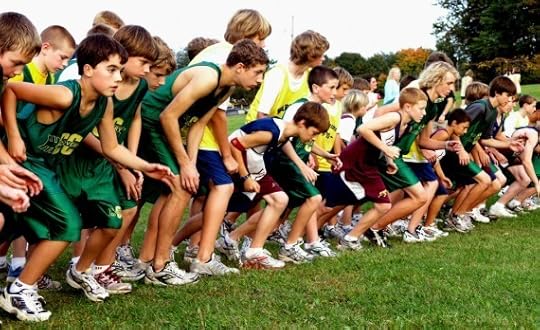
Photo Credit: Jon_Marshall via Compfight cc
I neglected to take the most important step you can take in pursuing your dream: the first one.
I built up excuses in my mind about opening myself up, not thinking anyone would want to read my words.
But in reality, I was succumbing to the death knell of so many would-be writers. I was stalling, because I didn’t want to be exposed and rejected.
What does it take?
This is the most common question I’m asked about writing a book, starting a blog, creating a network, or doing just about anything.
What’s required? How do I do this? Will it be hard?
The answer may be simpler than you think. It is the most critical ingredient to doing something that matters:
You’ve got to start.
Keep it simple, don’t complicate the process, and don’t over think it. Simply start somewhere (where you are right now is probably as good a place as any).
Too many of us delay doing work that matters due to seemingly legitimate reasons. I did it for years.
My fear of exposure made me constantly postpone taking the step that mattered most. The first one.
I would tell myself, “I’m not a good writer.” But I now understand that the message is more important than the level of quality I consider my writing to be.
I had to step past my insecurities and write, anyway.
They did it
What do Stephen King, JK Rowling, Steve Jobs, Oprah Winfrey, and Seth Godin all have in common?
They started.
And they all had work that was rejected.
Stephen King sold his first story The Glass Floor for $35. It was a start. But the first novel that he completed The Long Walk was rejected. I’ve read that Carrie was rejected 30 times and Stephen finally gave up and threw it in the trash, but thankfully his wife fished it out.
JK Rowling says she started Harry Potter while on a train and she finished it using an old manual typewriter. Rowling was on welfare at the time and a divorced, single mother. Twelve publishing houses rejected Harry Potter before it finally found a publisher and in 1997, Rowling received an £8000 grant from the Scottish Arts Council so she could carry on writing.
Steve Jobs famously started his first computer business in a garage with Steve Wozniak. Wozniak insists it actually all started in Jobs bedroom, but what matters is they started somewhere. By the way, the computer they created was rejected by both HP and Atari. That’s how Apple was born.
Oprah suffered an abusive childhood and watched television as her escape while dreaming of becoming famous. She started a broadcasting career at WVOL radio in Nashville. She later went on to television where she co-anchored a 6 o’clock news broadcast from which she was fired. Oprah started over again in morning television and eventually became the host of the number one talk show on television for 24 seasons.
Seth Godin frequently talks about his failures. That’s good news, because it also means he’s started enough projects to fail over and over again and yet have major successes along the way. Seth has revealed that he has gotten 900 rejection letters from book publishers.
Now it’s your turn…
Your work might get rejected, too, but even the best of the best get rejected. None of us are safe. Sooner or later we’ve got to take the step, dip our toes or dive in.
Here’s what you can do today:
Open your word processor.
Type a title for your book.
Write the first page.
It doesn’t have to be perfect; it doesn’t even have to be great. Simply start. Make it physical. Make it real.
Keep in mind that whatever you write doesn’t have to be published or shared with anyone. The only mission at hand is to write. Write freely and openly, mix ideas to create a unique perspective.
And see what you end up with.
It’s the starting that matters
I finally wrote my first book, a memoir about my childhood, at the age of 37. I had no plan, outline or goal. No preconceived notions or dreams of grandeur. I was no longer concerned with whether I was a good writer or not or if anyone would read it.
Earlier this year, I gave away free review copies of my memoir on Story Cartel, and it became their second most downloaded book on the site.
If we don’t start, we’ll never know what could be.
Publishing my memoir inspired me to create a blog and social network in a specific health niche and since then I’ve reached people all over the world.
Thanks to starting, I learned that I love to encourage people, especially those overwhelmed with doubt. Because of that, I’ve wanted to step out my original niche to reach even more people, but I’ve I put it off.
Maybe I didn’t think I was good enough or was afraid of rejection. But then one fateful day, I took an important step and started a new blog I had only dreamed of but consistently delayed.
In only a few months, I received an award for the blog. Who knew? The point isn’t just that I’m better than I gave myself credit for (although that’s a good point, too). It’s about starting anyway, regardless of what the results may be.
Sometimes we need a push to get started — and that’s okay. Maybe this will be that for you. I hope so.
Are you ready to start? Share in the comments.
You just finished reading The Most Important Step You Can Take! Consider leaving a comment!
Order my new book The In-Between before Aug. 10 and get $240 worth of bonus material! To find out more, click here.

August 7, 2013
What I Didn’t Learn About Life from Reading Comic Books
When I was a kid, I used to love getting lost in the world of comics. Every Saturday morning, I would rush to the store to spend what little money I had on these short, exciting stories full of action. And years later, I’m still rushing.
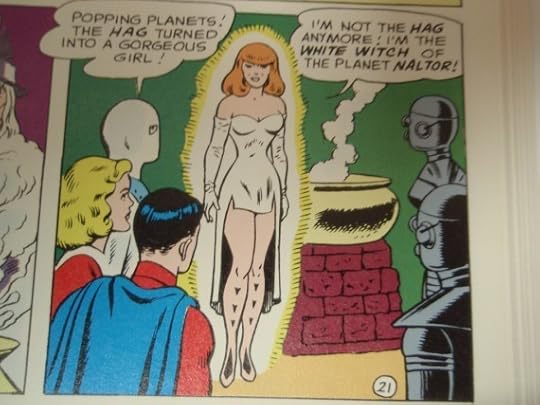
Photo Credit: Joelk75 via Compfight cc
For the adolescent reader in a world full of distractions, comic books are the perfect diversion, but they don’t always paint the most accurate picture of reality.
As great as they are, comics give us a warped, incomplete view of life. As much as Batman inspires us or Superman encourages us to be brave, our lives look little like those small, illustrated panels.
No, our lives happen somewhere in between.
When life slows down
I always hoped my life might look a little more like a comic book than it did — plus or minus any mutant abilities (that would be a bonus). But as I’ve grown up, I’ve started to see how silly that actually is.
In the movie Super, a crude film about superheroes, the protagonist Frank is sitting with his self-appointed sidekick, Libby, and they’re waiting in vain for something to happen. For an opportunity to fight evil. For the police sirens to start. For or something significant to happen.
But nothing does. So they sit in boredom, wondering what to do.
Frank: Maybe you need to be bored sometimes.
Libby: You don’t see them bored in comic books.
Frank: That’s what happens in between the panels.
Libby: Wow, in between the panels! Is that where we are right now?
As I watched the film, I thought: “Yes, this is where we spend our lives—in between the panels.”
We all want a life that that looks more like the stories we read in books or watch on the big screen. But real life doesn’t often feel like an adventure. In fact, it can seem rather boring. And as hard as we try to make it more interesting, we are still stuck with the frequent, less-than-remarkable moments.
What, then, do we do with those?
Here’s good news…
This is not the end of the tale. We are not left to live lives of insignificance and mediocrity. But life does slow down; inconveniences do occur; and delays happen to the best of us.
The challenge is what we do with these times. Will we waste, or learn to use, our waiting?
The slower times contain a wealth of wisdom for us to tap into, but only when we recognize them. Otherwise, we can grown detached from reality and end up living a fantasy, looking for every chance to escape reality.
This is why we fight the quiet and try to fill the void of inactivity with busyness. It’s why we sometimes stay up late or can’t sleep. We wonder — and worry — if this is all life has to offer.
All the while, we miss the truth: The thing we want to escape is what holds the key to our contentment.
What if…?
What if, instead of pining for the action of the next frame, we surrendered to the wait, learning to live in those “boring” moments with more intentionality?
What if we fell in love with the in-between times, relishing instead of resenting them?
Well, then, we might just find the satisfaction we’ve been searching for. Even in the mundane moments.
Especially then.
This was an adapted excerpt from my new book, The In-Between. If you order the book by 11:59 p.m., Aug. 10, 2013, you’ll automatically get $240 worth of free bonuses. Find out more here.
How does your life look — in between frames? Share in the comments.
You just finished reading What I Didn't Learn About Life from Reading Comic Books! Consider leaving a comment!
Order my new book The In-Between before Aug. 10 and get $240 worth of bonus material! To find out more, click here.

August 5, 2013
Early Reviews of The In-Between: How 89 People Deal with Waiting
Last night, my wife took me out to find my new book at the local Barnes & Noble. We tried to do this last year, and the whole thing ended in disaster. But this time, the results were different.

Photo by Ashley Goins
Not only did we find a copy of the book in store, we found five. And we know there were at least a total of ten, because my mother-in-law bought five just the day before yesterday.
While I was taking ridiculous photos with my own book at the bookstore, someone approached me, asking if that was my book. When I replied it was, he explained he was a reader and told me he was going to buy my book.
And then he asked for my autograph.
Yes, it’s crazy to think this is now my life (thanks to Josh, by the way, for making my night). And although I feel funny with some of the marketing stuff you have to do for books, I don’t feel funny about this part — the part where I share how this message is changing people’s lives.
It’s amazing to hear how this little idea of learning to embrace the in-between is setting others free from just waiting for the next big thing.
Early feedback on my new book
As you may know, last week was launch week, and Amazon is already astir with 50+ reviews (most of which are 5-star). On top of that, I’ve started to make the rounds with guest posts and interviews about the book.
We also did something unique with this book launch by offering a free digital copy to anyone who pre-ordered the book. So by the time The In-Between was released, a handful of readers had already read the book and were talking about it.
I asked some of those readers to consider writing a blog post or tweet to share their own “in-between” moment and the lessons they were learning. If you’re still on the fence about getting the book, check out what these readers have to say. Maybe they’ll help steer you one way or the other.
Word on the tweets
@JeffGoins I just finished #theinbetween and I cannot stop crying. You're a storyteller extraordinaire. I am moved beyond words. Thank you.
— Dayna Bickham (@DaynaBickham) August 3, 2013
@JeffGoins Finally downloaded "The In-Between" tonight. Good stuff so far. Very timely, on a personal level.
— Clay Rivers (@ClayRivers) August 5, 2013
What I have learned from @jeffgoins new book. There is life in between your hope and dreams, made up of the pauses in between the major …
— Janelle Keith (@thejanellekeith) August 4, 2013
Today's sermon was inspired by @JeffGoins' new book, "The In-Between". Audio coming soon. http://t.co/p8SD2HdHHx
— Marcus A. Cylar (@pastorcylar) August 4, 2013
What the blogs say
Lots more to come!
And that, my friends, is just the beginning. You can also follow the discussion via the hash tag #theinbetween on Twitter, Facebook, and Instagram. Oh, and check out this nifty Pinterest board I made just for the book.
More interviews, guest posts, and other fun things to come — very soon!
In the meantime, consider picking up a copy of The In-Between wherever you like buying books. Just make sure you do it before Aug. 10 to get your bonuses. And if you’ve already read it, be a buddy and please leave a review (those things are as good as gold to us authors).
Lastly, please tell your friends! These first few weeks of a launch are crucial to the long-term success of a book. If you want to lend a tweet or Facebook share, that would be much appreciated (click the links to spread the word). Thanks!
Now it’s your turn: Write about how you manage your times of waiting. Share in the comments (by posting the whole piece or a link to it).
You just finished reading Early Reviews of The In-Between: How 89 People Deal with Waiting! Consider leaving a comment!
Order my new book The In-Between before Aug. 10 and get $240 worth of bonus material! To find out more, click here.

August 3, 2013
Three Ways Marketing Fiction Differs from Marketing Nonfiction
For nonfiction writers, an author’s platform is gold. And for good reason: it can sell a lot of books. But over the past five years, as I’ve transitioned from authoring nonfiction advice books to writing thrillers, I’ve had to learn how to spread my message all over again.
I’ve also discovered three significant differences between fiction and nonfiction book marketing.

Photo Credit: sapheron via Compfight cc
Fiction readers discover books on book sites
Fiction readers shop at bookstores for their next read and pay attention to genre-specific book bloggers they trust.
But in general, they find plenty to read right on their devices (i.e. Kindles and iPads) and book sites. Remember: You can never sell as many books as online bookstores (e.g. Amazon), so try to optimize your presence there.
To begin, focus on the fundamentals of a good book page, which include:
professional book cover design
a compelling sales description
targeted categories
well-researched keywords
good reviews
appropriate pricing.
You also need to ensure your book is well-edited with a brilliant sample, as fiction readers are brutal when it comes to the number of clicks they will tolerate in a book before deleting. Make sure you hook them early on!
These might not sound like marketing tools, but they are actually the most critical aspects for fiction authors, as they ensure your book is discovered by the masses. Non-fiction authors should also pay attention to these fundamentals, too, since keyword optimization alone can sell more books.
Amazon is one of the top three search engines in the world, so choosing a book title that’s keyword-optimized is critical. When I changed my book title from How To Enjoy Your Job to Career Change I started to sell eight times as many books. It works.
Fiction readers shop in genres
We like thinking our writing is unique. But the truth is you must pick a specific genre to find your target audience. Of course, you can write crossover fiction, but when your book is published it has to be loaded with the categories already attached.
If you’re self-publishing, you get two category choices, so you have to decide up front. Categories on book sites are also where readers shop and have expectations for a certain genre, so this helps guide them.
If you don’t know where you belong, pick three to five books like yours and see what categories they fall in. Then go from there. You can also use this information to help target book bloggers and top reviewers in a genre.
If you choose the right category and continue to rank well over time, your book will keep selling.
For example, my ARKANE thrillers generally do well in the Religious Fiction and Action/Adventure niches, but ‘Thriller” is too broad a category to rank in against well-known authors.
Picking the right genre or category can mean the life or death of your book (in terms of sales).
Fiction readers are sensitive but voracious
When it comes to price, fiction readers are super sensitive. So be careful, especially if you’re coming from a nonfiction background.
Nonfiction authors can charge higher prices for their books because:
People will pay more for material they can act on and that helps them.
It’s a genre norm.
Authors can build a reputation through their platform and people will buy their books at a higher price because of that status.
Fiction readers are voracious. If your readers are buying five to ten eBooks a week (as many do), the price of your book needs to be low enough to attract that kind of reader.
Romance readers, in particular, devour books. Which is why it’s the largest selling eBook category and where you’ll find the lowest price points. In my experience, though, fiction sells in greater volume than nonfiction, so you can still make more money at a lower price.
However, it’s important to write more books to satisfy a hungry audience and to occupy more “shelf space,” which creates opportunities for discoverability. If you have more books available, it’s also easier to play with price points.
Free can be great, too, but it usually only works if you have a longer series and the freebie is the entry point.
In recent changes to their algorithm, Amazon’s KDP Select promotions have had less of an effect on subsequent sales than they used to. But authors who have their first book on perma-free (which you can do through price-matching on Smashwords) are still seeing growth in their fan base.
So when it comes to making the jump from nonfiction to fiction, remember these fundamentals so you can tackle your first novel and market it well. They should get you started with spreading your story to a brand-new audience. Good luck!
Note: Joanna’s book, How to Market A Book, is out now and already an Amazon #1 best seller. You can buy the book on Amazon, or if you want more marketing information every month, you can check out the premium course.
What questions/comments do you have about marketing fiction and nonfiction books? Share in the comments.
You just finished reading Three Ways Marketing Fiction Differs from Marketing Nonfiction! Consider leaving a comment!
Pre-order my new book The In-Between and get $240 worth of bonus material! To find out more, click here.

August 1, 2013
Time to Embrace the Wait: Order My New Book & Get Free Stuff!
Well, today is the big day. My second trade book, The In-Between, released this morning, and I couldn’t be more excited.
This is a book about a topic I’ve been struggling with for years: How do you learn to live in the moment? What I learned in the process of trying to answer that question changed my life — and I hope it does the same for you.
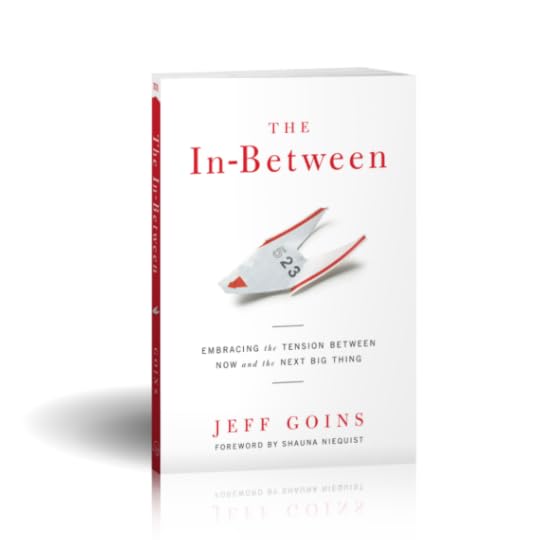
The In-Between releases today!
Everyone is waiting for something; each person is in between where they are and want to be. And if we don’t learn how to be content with where we are, how will we ever be satisfied?
Turns out, life is just a series of moments. And what we choose to do with those moments is how we spend our lives. I wrote this book to explore what would happen if we stopped wasting our waiting and finally embraced the “little” in-between times.
What this book teaches & why you should get it now
The In-Between will help you:
Find meaning in the “boring” times. We all have experiences that feel mundane or rote, but in fact these are the most significant experiences of our lives… if we choose to see them that way.
Live more in the moment. When we’re constantly waiting for the next big thing, we miss the importance of what’s right in front of us.
Experience the joy that comes with embracing inconveniences. We all encounter setbacks and delays in life that can frustrate us, but what if these were the very tools to help us grow?
If you’re ready to embrace the wait, you can order a copy from your favorite online or local bookstore (see a list here).
Now, let’s get real for a second…
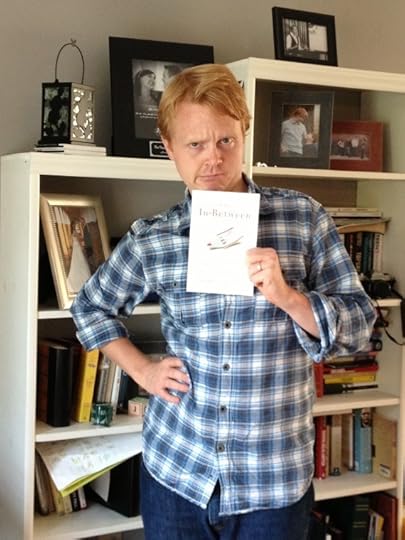
My most serious face.
I know it’s a big deal to ask you buy a book the week it comes out. We tend to take our time with books and wait to hear if they’re any good before buying a copy. I get that.
But if you’re reading this, then we have a relationship. Maybe you’ve been reading this blog for years, or maybe a friend just recommended it to you.
Either way, I’m asking you to take a chance. To trust that a $10 book will be worth your time. (To be fair, the book already has over 40 4- and 5-star reviews, so it’s not that much of a risk.)
Launch week is a big deal for an author and can sometimes make or break a book, depending on how much attention it gets. If this topic sounds appealing to you, all I’m asking is for you to pick up a copy over the next week and tell me what you think.
If you hate the book, send me an email and I’ll buy it back from you for whatever you paid. Seriously.
To further sweeten the deal (because I’m all about rewarding my audience), I’m offering six tiers of rewards for anyone who orders the book in the next 10 days.
And now for the rewards…
Tier 1: Reader (1 copy)
Buy 1 print book, and get six bonuses worth over $240 for free:
all electronic versions of the book
the audiobook (read by yours truly)
all digital copies of my last book
a 30-minute writing workshop (MP3 recording and worksheet)
free membership to an exclusive online community
the reader’s guide with discussion questions
Unlimited copies available. To get access to the bonuses, buy the book and email your receipt to inbetweenbonuses@gmail.com.
Tier 2: Friend (2 copies)
Buy 2 copies of the print book and get access to a private 90-minute teleconference, in which I’ll share:
my step-by-step process for writing a book
what it takes to tell your story (i.e. Memoir-writing 101)
how to get published and launch a book
I’ll also answer any questions you have about writing, publishing, or building a platform. Plus all the bonuses in Tier #1.
Unlimited copies available. To get access to the bonuses, buy the book and email your receipt to inbetweentwobooks@gmail.com. You’ll get an email when it’s time for the teleconference (TBD).
Tier 3: Giver (10 copies)
Buy 10 copies for a book club or group of friends, get an extra signed copy for FREE, and a limited edition print from the artwork in the book (created by my friend Many Thompson). Plus all the bonuses above.
Limited to the first 100 people. To get access to the bonuses, buy 10 copies of the book and then fill out this form. It’ll take a few weeks to fulfill all the orders, so please be patient.
Tier 4: Advocate (30 copies)
Buy 30+ copies for your organization, church, group of friends, etc. and get access to a one-hour Skype session with Jeff. Plus all previous bonus materials.
Limited to the first 25 people. To get access to the bonuses, buy the book, and then fill out this form.
Tier 5: Organizer (100 copies)
Buy 100+ books for your larger community (or all your friends and family) and get a free speaking gig from Jeff (you cover travel). Plus all previous bonuses.
Limited to the first 10 people. To get access to the bonuses, order the book in bulk at your preferred retailer (e.g. Barnes & Noble) and then fill out this form.
Tier 6: Influencer (300 copies)
Buy 300+ books (at a 40% discount) for your school, prison, or traveling circus and get Jeff to come visit you for a full-day of coaching and consulting (you cover travel and lodging).
OR… come visit Jeff in Nashville for a full day of hanging out and one-on-one coaching (you cover your own expenses).
Limited to first five people. To get access to the bonuses and find out fill out this form.
How to get the book and claim your rewards
Buy the book (however many copies you want).
Submit your receipts and info (unless you’re applying for Tier 6). If you’re buying at tiers 1 or 2, submit your receipt via email by forwarding it or by scanning and emailing it to one of the above email addresses. If buying at tiers 3–6, fill out the forms associated with that tier. You must do this by 11:59 p.m. on Aug. 10, 2013.
Wait for the goodies to roll in (contact jeff at goinswriter dot com if you have any questions). And don’t forget to tell your friends!
To grab your copy of The In-Between, click any of the links below:
Amazon | Barnes & Noble | Books a Million | Christian Book Distributors | Parable | Powell’s | Indiebound | Mardel
What does embracing the in-between look like for you today? Share a quick thought in the comments today (I’d love to hear from you).
You just finished reading Time to Embrace the Wait: Order My New Book & Get Free Stuff!! Consider leaving a comment!
Pre-order my new book The In-Between and get $240 worth of bonus material! To find out more, click here.

July 29, 2013
3 Lessons We Learn While Waiting (Excerpt from The In-Between)
I’ve spent my whole life longing for the next season, hoping better things would come when I graduated or got married or gave my life to a career worthy of my talents.
But now, I’m not sure holding out for what’s to come is the smartest strategy. And I have a feeling I’m not alone.
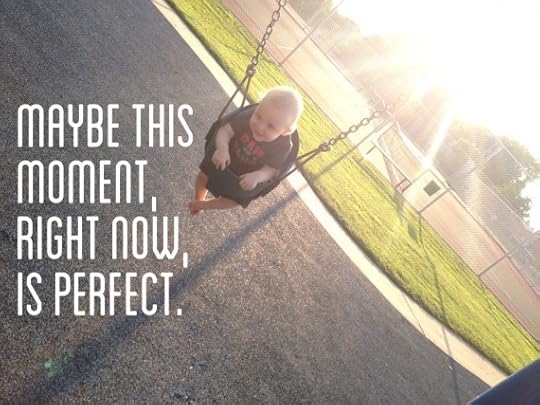
Enjoying the finer things in life (pin this).
We all want to live meaningful lives full of experiences we can be proud of. We want a story to tell our grandchildren. But many of us fail to recognize that the best moments are the ones happening right now.
The best time of your life
Maybe the good stuff isn’t ahead of or behind us. Maybe it’s somewhere in between. [Tweet that]
Maybe what we call “mundane,” what feels boring and ordinary, is really how we spend our lives. And we have an opportunity to make of it what we will — to resent its lack of adventure or rejoice in the beauty.
Perhaps, the abundant life we’ve been seeking has little to do with big events and comes in a subtler form: embracing the pauses in between major beats.
Real life doesn’t always happen like we see stories unfold in books or on the big screen. It doesn’t feel like an adventure most of the time. In fact, it can sometimes seem rather boring.
And as hard as we try to make it so, we are still occasionally stuck with less-than-remarkable moments. So what do we do with those?
What we learn when we embrace the wait
What if, instead of pining for the next big moment, we surrendered to the wait? Learning to live in those so-called “boring” times with more intentionality?
What if we fell in love with the in-between, relishing the interruptions instead of resenting them? We might learn a few lessons:
Slow down. If we wait for the experiences of a lifetime, we may miss the life in our experiences. It’s impossible live in the past or future; all we ever have is now. We might as well take our time.
Let go. Whenever we get stuck at a stop light, stalled in a checkout line, or put on hold with customer service, we must remember: all of these are signs telling us we are not in control.
Be grateful. You can’t get to from Point A to Point B without going on a journey. We must learn to appreciate the space in between those two points. It’s where we grow.
Most growth happens slowly, over time. You don’t see it happening, but one day you wake up, amazed at how far you’ve come.
When it comes to waiting, we have a choice: we can try to bypass the delays and inconveniences or embrace them as our greatest opportunities for growth.
The In-Between releases on Aug. 1 (but is currently available on Amazon, if you don’t like waiting for things). Find out more at the book site.
What lessons do you learn from waiting? Share in the comments.
You just finished reading 3 Lessons We Learn While Waiting (Excerpt from The In-Between)! Consider leaving a comment!
Pre-order my new book The In-Between and get $240 worth of bonus material! To find out more, click here.

July 26, 2013
Friends Let Friends Dream Big Dreams
My downstairs neighbor thinks he’s John Mayer. The only problem is, he’s not. At least — not yet!
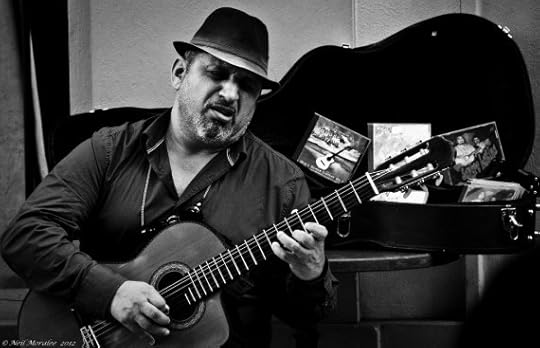
Photo Credit: Neil. Moralee via Compfight cc
We live in a very small apartment complex. I’m talking two stories high with 30 units. Nonetheless, he sings his heart out day and night. Sometimes, it drives me nuts. But I don’t stop him, and I never will.
Not when my wife and I have friends over for dinner.
Not when we’re having one of those conversations.
Not even when I’m trying desperately to maintain focus and study for the bar exam.
Because friends let friends dream big dreams.
We shouldn’t stop people from dreaming, even if those dreams are irrational, impossible, or outlandish. Instead, we should support them. Here’s why
1. It’s good to dream big dreams
All men dream, but not equally. Those who dream by night in the dusty recesses of their minds, wake in the day to find that it was vanity; but the dreamers of the day are dangerous men, for they may act on their dreams with open eyes, to make them possible.
—T. E. Lawrence, AKA Lawrence of Arabia, British Army Officer and Writer
Dreams don’t have any chance of coming true unless we dream them.
In Put Your Dream to the Test, John Maxwell insists on the importance of dreaming big dreams and articulating them specifically.
The more significant the dream, the greater the dreamer’s willingness to invest the time necessary to carve out its contours. And the more specific the dream becomes, the more power it has to propel that person forward, catalyzing action.
Thus, even when a friend’s dream strikes us as unreasonable, we should not quench it. Instead, we should do what we can to help that dream loom large, and become less hypothetical and more concrete. The more concrete the dream, the better chance there is that it will come true.
2. You never know what might happen
Several years ago, an unassuming young guy from my obscure, Midwestern hometown exploded onto the international music scene with a Billboard #1 synth-pop hit that he wrote on a computer in his parents’ basement.
It topped the charts in ten different countries and stayed in the Billboard Top 100 for more than 30 weeks! The guy is a musical phenomenon, but his talent and potential were completely unappreciated before his breakout success.
If it happened to him, it could happen to anyone.
Many of us know of someone who became a world-famous athlete or performer against all odds. And almost all of us know at least one person who had a book-publishing dream come true.
That person is the reason you’re reading this right now.
The bottom line is you just never know what might happen. No matter what our assessment of a friend’s likelihood of success is, it’s imperative we don’t dissuade her from pursuing her dream.
Regardless of what you are or what you have been, you can still become what you may want to be.
—W. Clement Stone, Philanthropist and Author
3. You have more influence than you realize
If your actions inspire others to dream more, learn more, do more, and become more, you are a leader.
—John Quincy Adams, Sixth President of the United States
Everyone needs encouragement — especially in the area of their dreams! Though dreams are powerful, they can also be quite fragile. Because they flow from the deepest passion God knit within your heart. They have life-defining potential, even though pursuit of them risks vulnerability.
When a friend reveals his dream to you, he risks his heart and gives you more influence than he (or you) may realize. You have the power to unleash that person’s passion and potential — or to jam a cork in the wellspring, stemming its flow, maybe forever.
So what?
If your friend is a dreamer but not a doer, encourage her to take action. Give her the support she needs to take the next step and overcome her fears, excuses, and misgivings so that she can start.
If your friend is already a doer, keep encouraging him! We all need encouragement to continue through life’s many valleys, especially when we’re working hard and don’t see much happening.
Regardless of the goal — whether your friend wants to be a musician, doctor, business owner, writer, or something else — it’s an amazing gift to be champion another person’s dream.
It’s a privilege to give friends permission for the pursuit, to help them find resilience to press on. And the fact is we all need that same support ourselves. So why not give it to others?
How do you support a friend’s dreams? How do they support yours? Share in the comments.
You just finished reading Friends Let Friends Dream Big Dreams! Consider leaving a comment!
Pre-order my new book The In-Between and get $240 worth of bonus material! To find out more, click here.

July 22, 2013
What’re You Waiting For? (Advice for Those Who Feel Stuck, Book Trailer, & Video Contest!)
We can all relate to that feeling of stuck-ness, when we’re in one place and want to be in another. When we have to wait. But what do we do in these times?
If there’s one lesson I’ve learned these past few years, it’s this: Be here, now. There’s always another milestone to achieve, always another event to plan for. The hard part is to be present, especially when it doesn’t feel that exciting.
If you know what I’m talking about, then you’re going to like my new book, The In-Between. We just released the trailer last week on YouTube, and folks are loving it. You can watch it below (click here if you’re reading this via email or RSS):
Crowd-sourced advice for those who feel stuck
I wrote this book for anyone who felt stuck, who struggled with the tension between now and the next big thing. To help people make sense of the slower times in life. After hearing feedback from early readers, I asked them to share some lessons they were learning from their times of waiting:
We are so conditioned to keep striving for something more, but the most beautiful moments are when we can learn to truly live and treasure the now.
There was a young man who attended high school with my daughter and was diagnosed with terminal brain cancer. He fought valiantly, but lost his four and a half year battle when he was just twenty-two. In that short in-between time, he touched innumerable lives and provided tremendous inspiration to everyone around him.
There’s a bit of grieving, a little death that happens when you realize ‘some day’ is now. In the end, it will be freeing; but at the beginning, it’s tough. It goes against what we hear and are accustomed to thinking. It takes a while to turn off the waiting hope and live for today.
Dream big, plan smart, and be fully engaged in the now. It is just as important for me to sit down to play and build a Lego dream house with my children today as it is for me to continue working hard and build the foundation for my family’s dream life of tomorrow.
When you get in between one big thing and the next , you are still as awesome as you were before. Now, you are charging your batteries, collecting new strength and growing inside. The in-between period is a time when you still advance, simply in a different manner. You grow, you learn to appreciate the ‘here and now’ and you get prepared for the next great thing waiting for you ahead!
—Ani Alexander
Our children have learned to be creative with what they have. They’ve learned that fun is something they create, not something we buy for them. I now see the treasure of these moments and believe this formative season is shaping how they will someday offer themselves to the world around them.
My husband and I have been moving our family of six around the country as his career directs. We spent time on the lush Eastern seaboard until God decided we needed some time in the desert. While most people would consider the desert a dry and barren place, I now have a different perspective. This is the place where if we dig deep enough, we can find riches, blessings, and oil for the journey.
You and I are incapable of running a marathon or even publishing a book on a daily or weekly basis. In our human frailty, it is just too demanding. The reality is, although we may not always like them, we need times of in-between. Time to recover from the amount of physical, emotional and spiritual energy exerted in achieving your accomplishment. Time to dream and discover and plan and prepare for achieving the next major milestone (whatever it might be). Time to simply be present in the moment.
When I look back over the journey I’ve taken so far, it’s been the times of waiting that have been most memorable and special to me. And, I know I’ve missed many blessings of the in-between because I was too preoccupied with what was over the horizon.
Without the in-between moments, I wouldn’t have changed and grown the way I have. I know that I am not at the end, but I am encouraged to persevere.
Video contest: Share what you’re waiting for & win!
Hearing other people’s stories can be encouraging, even empowering. So we’re going to do something fun, all of us, to incite some more story-sharing…
Between now and Aug. 8, I’m hosting a video contest. First prize will be a Kindle Fire, second prize a $100 Amazon gift card, and third prize a $25 Amazon gift card. How do you enter? Simple:
Record a short video (30-90 seconds), explaining something you’re waiting for and what you’re learning in the “in-between.”
Upload the video to YouTube, linking to inbetweenbook.com in the description of the video.
Go here and enter the link to your video (if you have trouble, email jeff at goinswriter dot com).
Wait (heh, heh) for me to announce the winners by Aug. 15.
Some tips to give you a competitive advantage (not required, but recommended):
A little humor doesn’t hurt.
Shorter is better (trust me).
Write something interesting and original.
Practice once or twice before hitting record.
Learn from winners of previous contests.
Everyone is waiting for something. What we choose to do with those times is what determines who we will become. So what are you doing with the wait? [Tweet that]
Note: The book comes out Aug. 1, but if you pre-order now, you’ll get a chance to read it before everyone else, plus a whole bunch of other goodies.
What are you waiting for, and how is it shaping you? Share in the comments (feel free to use this as a test space for your video ideas or just get started here).
You just finished reading What're You Waiting For? (Advice for Those Who Feel Stuck, Book Trailer, & Video Contest!)! Consider leaving a comment!
Pre-order my new book The In-Between and get $240 worth of bonus material! To find out more, click here.

July 19, 2013
No Matter How Difficult the Task, Trust the Process
I’m in a 105-degree room, twisting my spine and muscles in ways that I could have never imagined. Sweat is leaking off my body. It’s hard to breathe. But at the same time, I know it’s the most important thing I have to do. There is power in breathing.

Photo Credit: F L I R S T – Palk Clap via Compfight cc
“Trust the process,” says my yoga instructor, pacing around the room. “This too shall pass.”
I ponder that thought as I’m trying to stay mindful of my breath and posture with salty sweat droplets attacking my eyes.
Trust the process? Why? How?
I’m so uncomfortable, my shorts are soaked, and I almost regret coming.
The thing about hot yoga — or any rigorous exercise — is that there isn’t a comfort zone. That’s kind of interesting if you think about it; it says a lot about us as humans and how we reach mastery.
As we pass a threshold, a new one awaits
As we shed a piece of our old selves, we embrace a more powerful mind and body. It may not be obvious until later when we self-reflect or when others notice it. But change does occur.
Three months ago, I couldn’t touch my toes. Now, I’m practicing headstands. What made the difference? I committed to the work and trusted the process.
The process never changed: show up five times a week, practice hard, receive feedback, press in to the discomfort. This continual discipline of showing up and giving it all I had changed me, helped me exceed my own expectations.
And in thinking about this, I realized writing is a lot like hot yoga.
Trust your process
Do you doubt yourself? I do. Every morning, while I exercise, during my writing time, and before bed. ”Will I ever make it?” is a thought that haunts me. Plagues me. I can’t escape it. But it’s also what compels me to show up every day.
Writing is one of the most difficult creative endeavors.
It’s normal for writers to seek shortcuts and hacks, to find some new tip or trick, something to get our work accepted by others. But how difficult it is to write for months — or even years — and get little to no response. How unrewarding.
But maybe that’s not why we do it all.
I’ve been writing longer than I’ve been doing yoga — four years, to be precise. But all four years weren’t the same:
My first year was child’s play. The second was more serious. The third year, there was an epiphany when I started landing big guest posts and self-publishing books. That’s the year I called myself a writer with confidence. Now, embracing my fourth year, I’ve changed my strategy.
But the process has never changed. I keep showing up, writing, reading, shipping, failing, and breathing. You must always keep breathing.
The pattern is too familiar
Do you compare yourself to other writers? I do. Do you look at them and say,
Wow, they have such a large audience, they’re self-employed, they do this and that — ugh, I wish I had their success.
Well, guess what? You do have their success. It’s yours for the taking. But here’s the catch: You have to trust the process. It’s about building momentum, making sure the flame of inspiration doesn’t quit.
When does fire stop burning? When there is nothing left to burn.
When you stop showing up and allow fear to sabotage your work, the outcome is ashes. You’re done.
We fail to start a new draft or finish the old one, because we’re uncertain of the process, insecure of our own ability. We doubt ourselves and forget that our heroes were rejected, too.
But those we remember were the ones who stuck with it:
Seth Godin‘s been writing on his blog, unfailingly, for over 10 years — spreading the same message since 2002.
Stephen King continues to ship book after book, but don’t forget it took 10+ years to sell his first novel, Carrie.
Hunter S. Thompson was fired from Time for insubordination, was beaten by the Hell’s Angels, flew down to Puerto Rico for a sporting magazine, El Sportivo, only to realize that the place went down upon his arrival; he used this failure and wrote The Rum Diary, which in turn, became a film played by Johnny Depp.
It took Chris Brogan 10 years to get his first 100 subscribers.
Have you been writing for 10 years? If not, you still have a ways to go.
No matter what, do this…
Keep writing and refining your craft. Have faith in the process and stop comparing yourself to others.
When you’re doing that, you’re doing all you can do. Slowly but surely building momentum. Honing your skill and earning an audience’s attention.
As you go through this process, you’ll learn new things about your skill. Maybe you’ll change a small tactic or completely redesign your website, as I did. You may even find a new approach to how you edit your work or practice. And all of that is okay.
What matters most is that the process — whatever it is — remains relentless. Showing up, doing the work, shipping, learning, and of course, always breathing.
If you do that, you will continue to feed your fire.
How do you trust your process? What keeps you going? Share in the comments.
You just finished reading No Matter How Difficult the Task, Trust the Process! Consider leaving a comment!
Pre-order my new book The In-Between and get $240 worth of bonus material! To find out more, click here.




